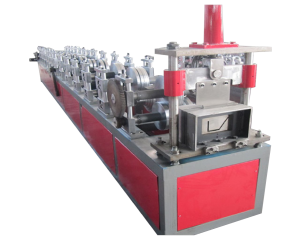More and more light-gauge steel framing subcontractors and self-performing general contractors are getting involved in the off-site assembly of light-gauge steel wall panels, floor sections and roof trusses. Some panel shops and truss manufacturers are roll forming their own components. Some are not. What lies under the decision to buy a roll forming machine and form your own light-gauge steel framing components?
Before anyone dives into the pros (many) and cons (few) of buying a roll former and fabricating light-gauge steel framing components, these critical questions must be addressed.
What are you planning on building? Commercial, multifamily, limited-service hotels, public storage units, student housing? Each of these markets and building types require specific component sizes and material thicknesses. Any machine buying decision begins with knowing what shapes and sizes will be required.
Are you planning on building both the building and the panels/trusses/floors? Screws, welding, dimples? Header types, insulation, mid-span bracing? Jig tables, compression tables? Specific framing and assembly techniques are best addressed with certain types of equipment and features in the stud and track. Well-matched techniques and tools is the first big step towards efficiency and ease of use with your own components.
Will you be using any kind of building design software? There are many choices out there and each software package has its specific strengths. Like the roll forming machine and its punched features, software tools ought to be well adapted to the framing and assembly techniques under consideration.
Do your framing projects require any kind of third-party code compliance or certification? Will you be bidding and negotiating projects whose specifications require use of roll formed components that conform to specific quality control programs? Decisions related to inkjet printing capabilities and labeling may well be driven by these requirements. This may drive steel-buying decisions as well.
What do you anticipate your project volume looks like? Roll forming machines are great for making a large amount of very specific products. However, caution is warranted. Multi-profile machines boast variety but may be confined to a narrow range of products. In the case of either low volume, large variety, or both, a roll forming machine may not be the best decision for your own component fabrication.
How much floor and yard space will you need? Room for the roll forming line is where many buyers begin and end the floor space discussion. The storage of raw stock—coils—requires both space and a concrete slab strong enough to support the steel. Room for the staging and inventory of both components and assembled product needs to be considered as well. Project volume factors into these considerations as well.
How will you go about buying steel? New to buying coils? Steel can represent as much as 75 percent of the cost of the final product. To that end, poor buying decisions and poorly understood material requirements can quickly consume profits. The price of the steel (priced by weight) is just the beginning of the conversation. Transportation costs. Slitting costs. Inventory of various coil widths and thicknesses. Availability. Effective buying practices. Take all of these into consideration.
Do you need to retain engineering services? Fabrication of load-bearing structures (walls, floors and trusses) all require plans/drawings that carry a professional engineer’s stamp. Understanding who in the overall process is responsible for the arrangement of these services and who bears the cost is critical.
Product variety: do you have to make all of your own parts? No. High-volume or novel/proprietary components are obvious choices for your own roll forming operation. Low-volume and atypical components, as well as structural steel, can be purchased from local suppliers. You can acquire additional machinery and ancillary equipment over time.
What are the real pros and cons? Roll forming your own components allows you to make higher quality parts for your own use than what is typically available commercially. Add accuracy, programmable features, CAD integration, small batch capability and reduced material costs.
What’s not to love? Bear in mind you are taking on quality control, capital asset management and steel buying responsibilities. Serious undertakings, but readily manageable areas of responsibility.
Post time: Jul-08-2022

